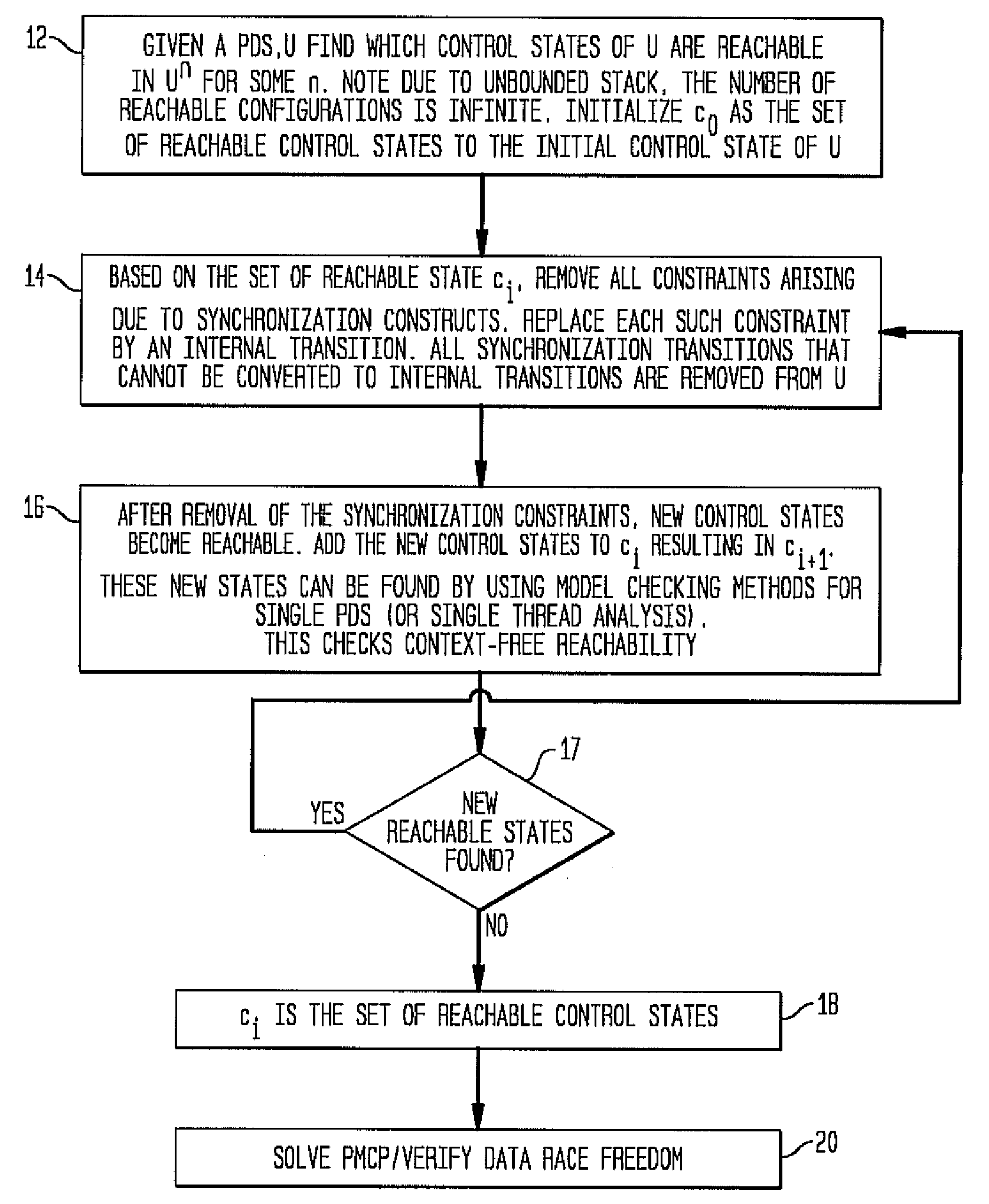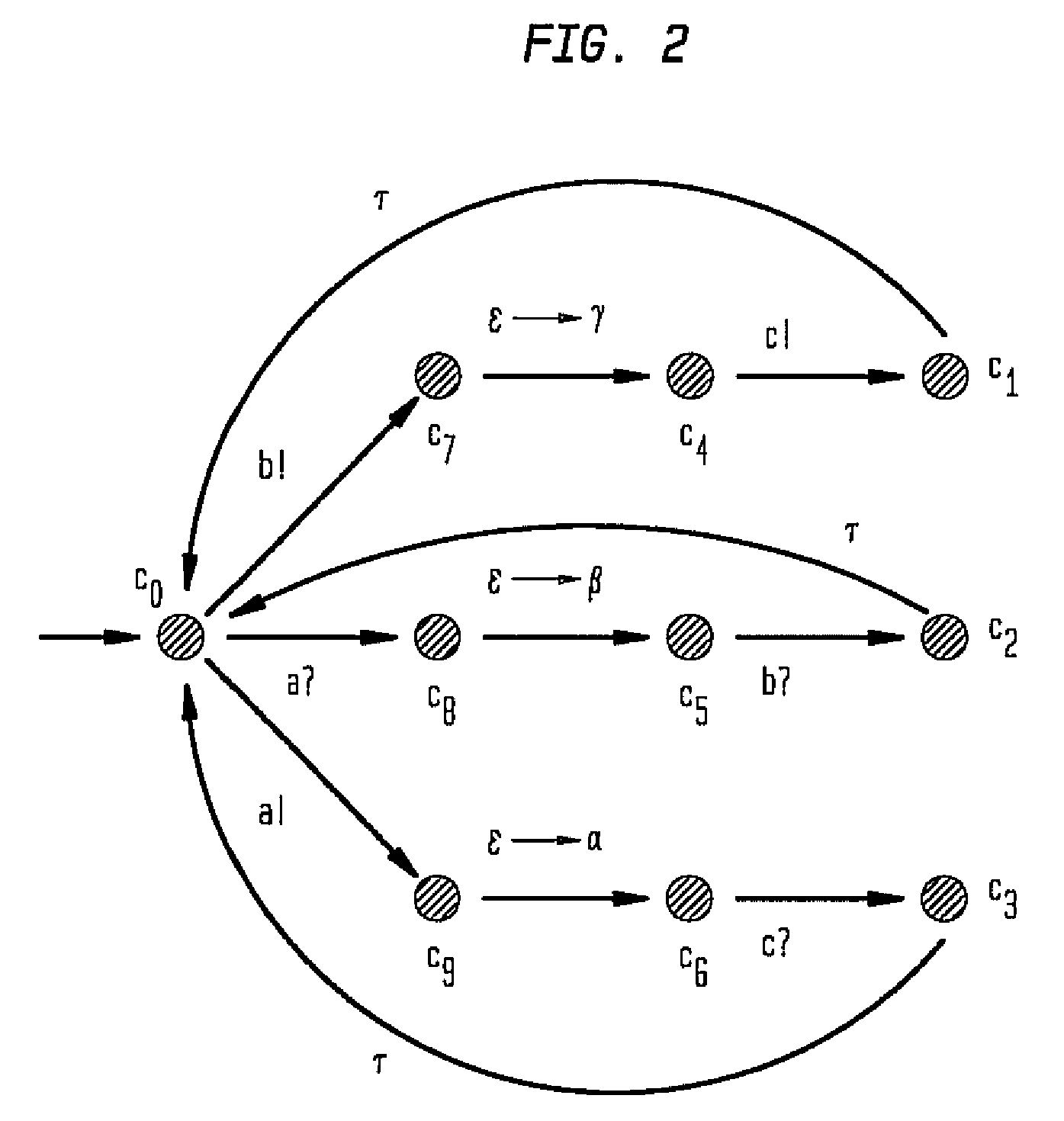Model checking parameterized threads for safety
a model and thread technology, applied in the field of verification of concurrent programs, can solve problems such as state explosion, limit verification methods, and it is impossible to confirm that a system behaves correctly in all circumstances
- Summary
- Abstract
- Description
- Claims
- Application Information
AI Technical Summary
Benefits of technology
Problems solved by technology
Method used
Image
Examples
Embodiment Construction
[0026]The present embodiments relate to computer system verification and more particularly to verification of concurrent programs, such as, e.g., device drivers used for controlling hardware components like disk drives, audio speakers, etc. In particularly useful embodiments, parameterized qualities of computer systems are exploited in that the concurrent programs are comprised of many copies of the same hardware or software component. In addition, the present embodiments are applicable to other applications, such as, e.g., embedded software used in mobile devices like cell phones, personal digital assistants (PDAs), database software, SQL servers, application level software, like web browsers (Firefox™, Explorer™) or any application using concurrency.
[0027]Model checking of interacting pushdown systems is a core problem underlying dataflow analysis for concurrent programs. However, it is decidable only for very restricted temporal logic fragments. The fundamental obstacle is the un...
PUM
 Login to View More
Login to View More Abstract
Description
Claims
Application Information
 Login to View More
Login to View More - R&D
- Intellectual Property
- Life Sciences
- Materials
- Tech Scout
- Unparalleled Data Quality
- Higher Quality Content
- 60% Fewer Hallucinations
Browse by: Latest US Patents, China's latest patents, Technical Efficacy Thesaurus, Application Domain, Technology Topic, Popular Technical Reports.
© 2025 PatSnap. All rights reserved.Legal|Privacy policy|Modern Slavery Act Transparency Statement|Sitemap|About US| Contact US: help@patsnap.com



